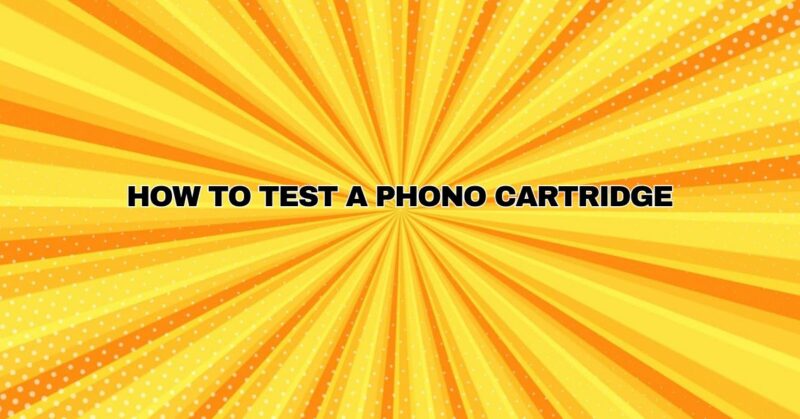A phono cartridge is a crucial component of your turntable setup, responsible for translating the physical grooves of a vinyl record into an electrical audio signal. To ensure that your vinyl records are accurately reproduced with clarity and fidelity, it’s essential to regularly test and maintain your phono cartridge. In this comprehensive guide, we’ll explore how to test a phono cartridge for optimal performance, covering essential steps and considerations to help you achieve the best possible sound quality from your vinyl collection.
Why Test Your Phono Cartridge:
Testing your phono cartridge serves several critical purposes:
- Maintaining Sound Quality: Regular testing ensures that your cartridge is functioning correctly, which is essential for preserving the sound quality of your vinyl records.
- Preventing Damage: Identifying issues early can help prevent damage to your records caused by a misaligned or damaged cartridge.
- Optimizing Setup: Cartridge testing allows you to fine-tune tracking force, anti-skate, and alignment settings for optimal performance.
- Troubleshooting: If you encounter playback issues or sound quality problems, cartridge testing can help pinpoint the source of the problem.
Tools and Materials You’ll Need:
- Test Record: A dedicated test record with tracks designed to evaluate cartridge performance is highly recommended. These tracks can help you assess various aspects of your cartridge’s performance.
- Tracking Force Gauge: A reliable tracking force gauge is crucial for measuring the vertical tracking force (VTF) applied by your cartridge’s stylus.
- Anti-Skate Adjustment Tool: If your turntable has adjustable anti-skate settings, you’ll need the appropriate tool to make adjustments.
- Alignment Protractor: A protractor is essential for ensuring that your cartridge is correctly aligned with the grooves of your records.
- Clean Record: Before testing, it’s important to clean your test record thoroughly to ensure accurate results.
Steps to Test Your Phono Cartridge:
- Prepare Your Turntable:
- Ensure your turntable is set up on a stable surface, and the platter is level.
- Make sure your turntable is properly grounded, and all connections are secure.
- Check Alignment:
- Use an alignment protractor to verify that your cartridge is correctly aligned with the grooves. Proper alignment is critical for accurate tracking and sound quality.
- Set Tracking Force:
- Use your tracking force gauge to set the correct vertical tracking force (VTF) according to the manufacturer’s specifications for your cartridge. This information is typically found in the cartridge’s manual.
- Adjust Anti-Skate:
- If your turntable has adjustable anti-skate settings, use the provided tool to set it to the recommended value. Anti-skate helps counteract the tendency of the stylus to pull toward the center of the record.
- Clean the Test Record:
- Clean the test record meticulously to remove any dust or debris that could affect the test results. A clean record ensures accurate measurements.
- Test the Cartridge:
- Play the test record and carefully listen to the tracks designed for cartridge evaluation. These tracks may include frequency sweeps, tracking ability tests, and channel balance assessments.
- Pay attention to any distortion, tracking errors, or channel imbalances. These issues can indicate problems with your cartridge that need attention.
- If you encounter any issues, consult your cartridge’s manual or seek professional assistance for further diagnosis and potential adjustment or replacement.
- Listen to Music:
- After evaluating the test tracks, listen to some of your favorite records to ensure that your cartridge provides the desired sound quality and clarity.
- Regular Maintenance:
- Make cartridge testing and maintenance a regular part of your vinyl listening routine. Regular checks can catch potential issues early and keep your cartridge in optimal condition.
Conclusion:
Testing your phono cartridge is a vital aspect of maintaining optimal sound quality and preserving your vinyl records. By following these steps and using dedicated test records and tools, you can ensure that your cartridge is performing at its best. Regular testing, alignment, and adjustment can help you enjoy the full sonic richness and fidelity of your vinyl collection for years to come. If you encounter persistent issues or require more advanced adjustments, consider seeking assistance from a professional audio technician or turntable specialist to ensure the best possible listening experience.

